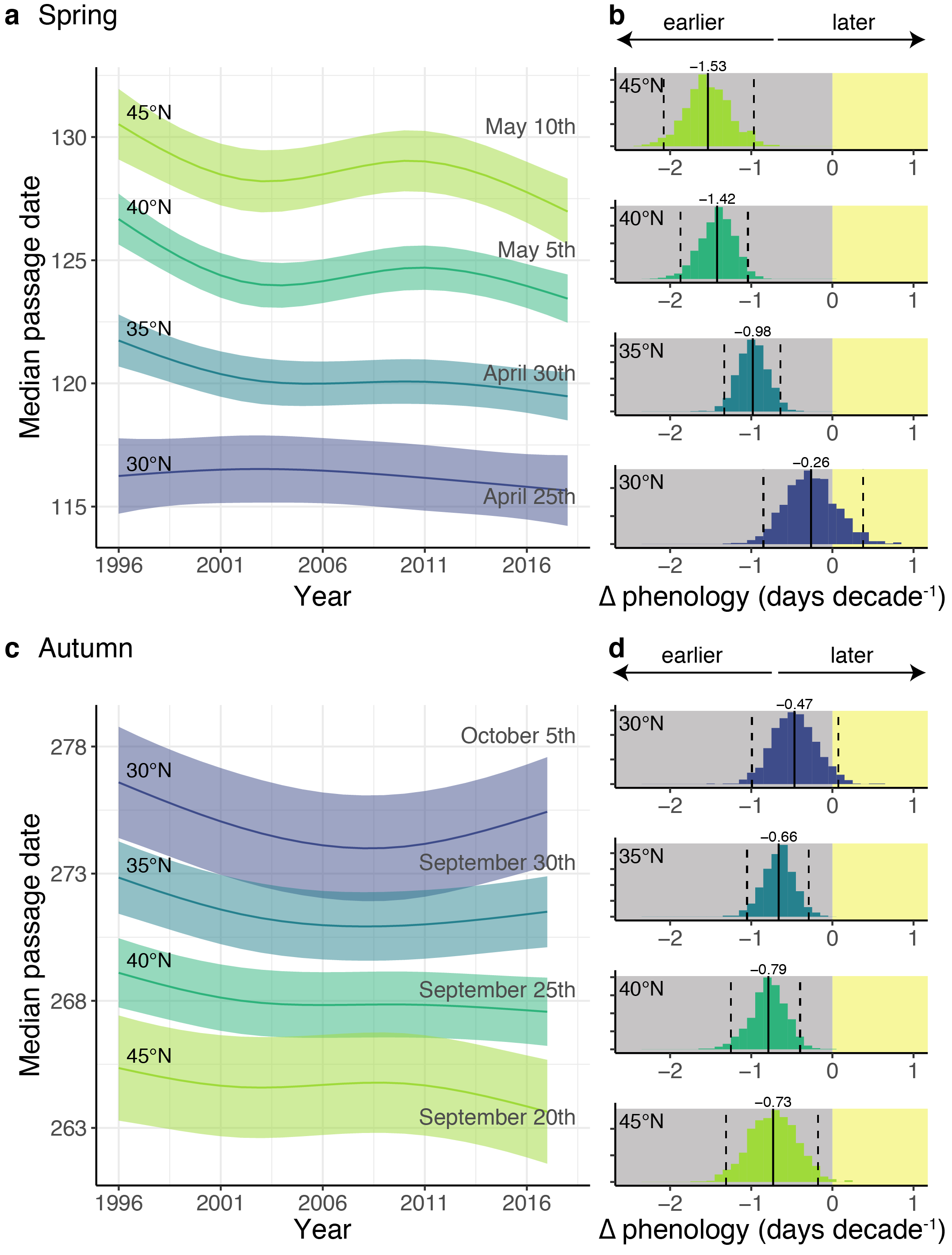Team BirdCast has been analyzing radar data with our group of talented collaborators, and today we published a new study on shifting patterns of nocturnal bird migration and how dynamic these patterns can be spatially. You can find the paper here. In brief, climate change may have dramatic impacts for birds that have synchronized timing of their migrations with resource availability. We analyzed 24 years of remotely sensed data collected by weather surveillance radar to quantify how birds responded to changes in temperature at the continental scale. The average peak migration timing advanced in spring and autumn, and these changes were generally more rapid at higher latitudes. Decadal changes in surface temperatures predicted spring changes in migratory timing, with greater warming related to earlier arrivals. This study represents one of the first system-wide examinations during two seasons and comprises measures from hundreds of species that describe migratory timing across a continent.

This figure, from the article, shows predicted peak spring (a) and autumn (c) migration dates by year at 143 weather surveillance radar stations. Fitted lines and 95% confidence bands derived from a generalized additive mixed model (GAMM). (b and d) Distributions of phenological change (day decade-1) extracted from 1000 bootstrapped GAMM samples. Solid lines show the mean of the distribution and the dashed lines the 5th and 95th percentiles. Lines and histograms are shaded by latitude.




